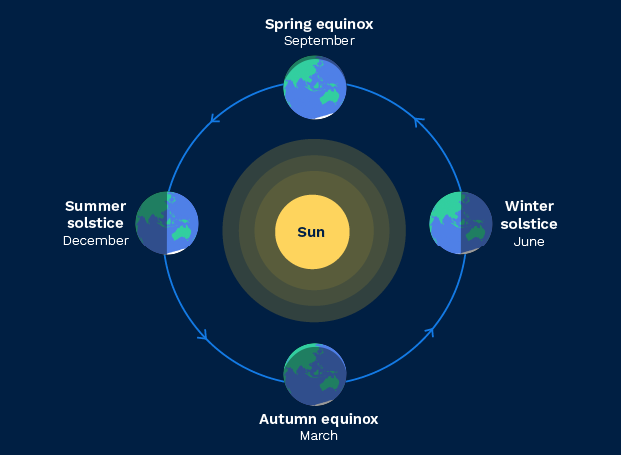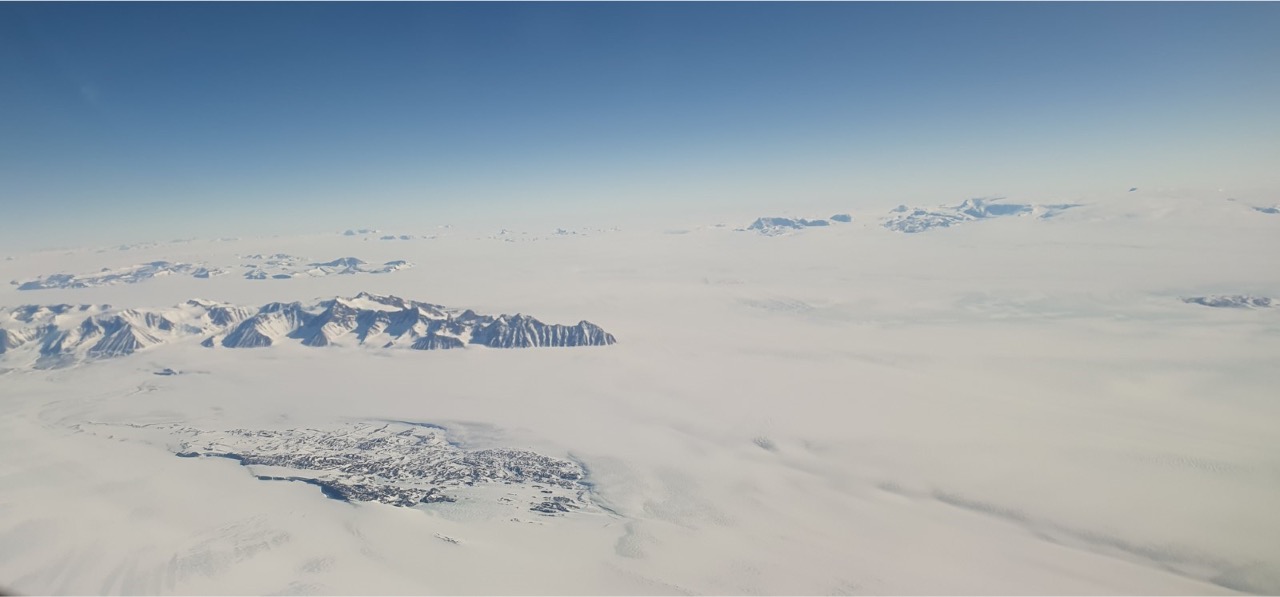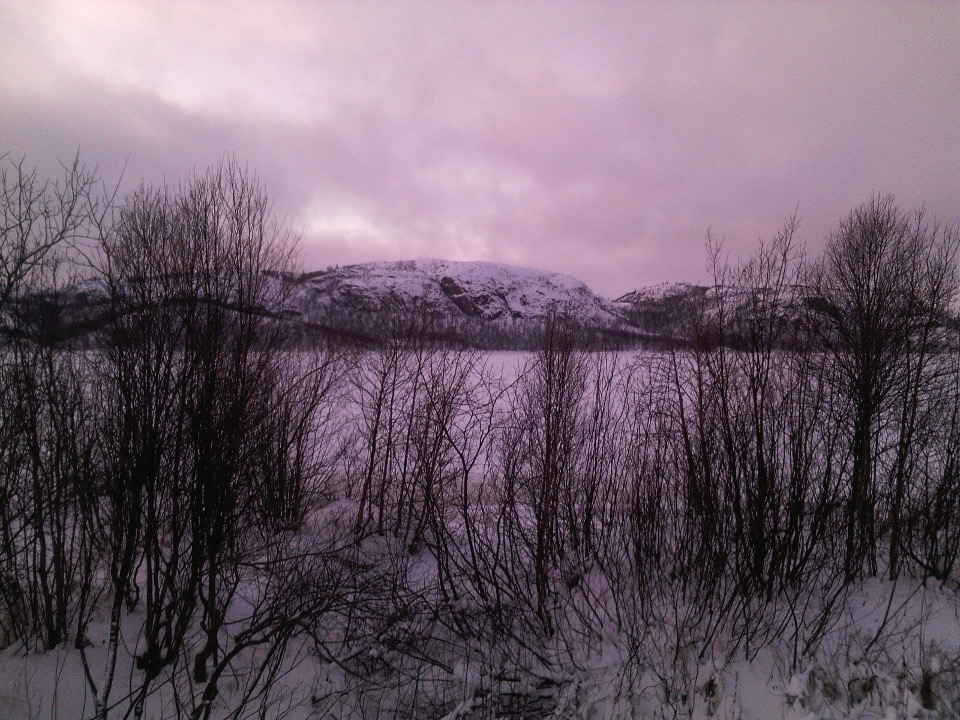News
‹ back to weather news
News
-
The fascinating phenomena of polar night and the midnight sun
Angus Konta, 30 December 2024Each year, you likely notice that the length of the day changes according to the tilt of the earth on its axis as it orbits the sun. The further you are from the equator, the more noticeable this change becomes. In fact, if you were to travel to Antarctica or the Arctic today, less than two weeks after our summer solstice, you will likely experience either the midnight sun, or polar night. Both these phenomena are quite fascinating and occur on virtually every planet that has a day-night cycle.
How does it work?
The earth is tilted on its axis at approximately 23.5 degrees, which defines the distance between the tropics of Cancer and Capricorn from the equator, as well as the distance from the Arctic and Antarctic Circles to the North and South Poles (approximately 66.5 degrees N/S of the equator). As the earth orbits around the sun each year, each pole alternates between 6 months of facing the sun, and 6 months of facing away from the sun in a constant cycle.

Image: Earth's axis remains permanently tilted as it orbits the sun. Source: BoM
The Circles:
The Arctic and Antarctic circles are the lowest latitudes that either face the sun for a full day or face away for a full day. Beyond these lines, the summer solstice features a 24-hour day, where the sun lowers to the horizon without setting, known appropriately as the midnight sun. Conversely, days surrounding the winter solstice feature 24-hour nights, where the sun rises to the horizon. Just inside the circles, the sun rises to just below the horizon, without actually coming up. This is known as polar night.
Inside the Circles:
Most of Antarctica, as well as far northern parts of Europe, Russia, North America and most of Greenland, lie within the Antarctic and Arctic circles, where the summer months feature days to weeks of constant daylight. Places such as Tromsø in Norway (69.7°N), Barrow in Alaska (71.3°N) or Australia's Mawson Station in Antarctica (67.6°S) experience between 45 and 82 days with the sun on or above the horizon each year, with the midpoint of this period corresponding to the summer solstice.

Image: Almost the entire Antarctic continent receives 24 hours of daylight at this time of the year. Source: Author's photo
If you enjoy seemingly endless daylight, you could consider a mid-year holiday to Longyearbyen in Norway's Svalbard archipelago. At 78.3°N, it amongst the world's northernmost settlements, and has constant daylight for 127 days from April 19th to August 24th, more than 4 months straight!
In the winter months, long nights take on a whole new meaning, with twilight the closest you'll get to sunlight, and some areas getting no natural light near the solstice. Again, the length of the longest dark spells depends on how deep you are inside each circle. Longyearbyen doesn't see the sun for 112 days between October 26th and February 14th.

Image: This is about as light as it gets at this time of year in Norway's far northern regions. Source: Author's photo
The Poles:
At the poles, your standard clock can almost be replaced by a calendar when determining the time of day, as the sun rises and sets just once per year. Between the equinoxes that take place around September 21st and March 21st, the North Pole experiences constant daylight for about 6 months, while the South Pole gets no sunlight, while the reverse is true for the other half of the year.
Midnight sun and the polar night may seem quite extraordinary here in Australia, but approximately 4 million people live north of the Arctic circle, experiencing true polar night and the midnight sun each year. Many Arctic communities incorporate the first sunrise of the new year into their cultures, with holidays and festivals celebrating first light of the year, as well as communities that celebrate the midnight sun each year. Meanwhile, people in Antarctica at this time of the ring in the new year in broad daylight, something many people on the continent are preparing to do now as 2024 comes to a close.
- Other news
- Thu 02 Jan 2025 Australia registers 2nd warmest year on record
- Wed 01 Jan 2025 Australia's Black Summer Fires five years ago on this day
- Tue 31 Dec 2024 New Year’s Eve and Day: will you fry or soggify?
- Tue 31 Dec 2024 Australia's weather extremes in 2024
- Sun 29 Dec 2024 Capital Rainfall Review

